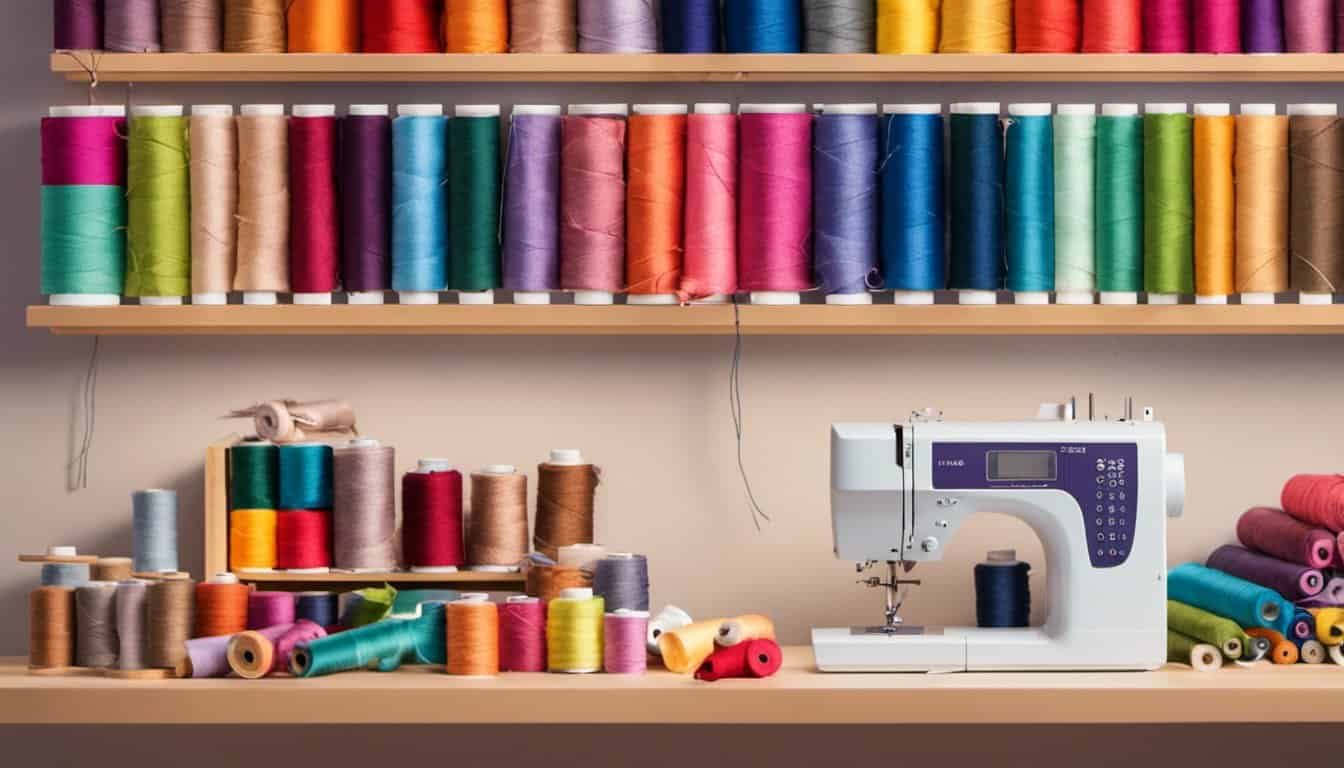Adding a cuff to a sleeve can transform a simple garment into something special. I’ve always loved how the right cuff can add a touch of elegance or a splash of personality to an outfit. Whether you’re updating an old shirt or creating a custom piece, sewing a cuff is a rewarding project.
In this guide, I’ll walk you through the steps to sew a perfect cuff for your sleeves. We’ll cover everything from choosing the right fabric to mastering the stitching techniques. By the end, you’ll feel confident adding those finishing touches that make your clothing truly unique.
Tools And Materials Needed
To sew a cuff for sleeves, I gather the following tools and materials:
- Fabric: Choose 1/2 yard of fabric that matches or complements your garment.
- Thread: Use polyester thread in a color that matches your fabric for durability.
- Scissors: Sharp fabric scissors ensure clean cuts.
- Sewing Machine: A reliable machine with a zigzag stitch setting works best.
- Measuring Tape: Accurate measurements are crucial for a consistent cuff size.
- Pins or Fabric Clips: Secure fabric layers together before sewing.
- Iron and Ironing Board: Press seams and edges for a professional finish.
- Cuff Pattern or Template: Utilize a pre-made pattern or create your own to guide your sewing.
- Chalk or Fabric Marker: Mark cutting lines and stitching points on the fabric.
- Seam Ripper: Useful for correcting any sewing mistakes.
Having these tools and materials on hand ensures a smooth and efficient cuff sewing process.
Preparing The Fabric
Selecting the right fabric ensures your cuff complements the garment. I choose fabrics like cotton, linen, or polyester blends for their durability and ease of sewing.
Pre-Washing
Washing the fabric prevents shrinkage after sewing. I wash all pieces in cold water and tumble dry on low heat to maintain fabric integrity.
Ironing
Properly pressed fabric makes cutting accurate. I iron each fabric piece to remove wrinkles, ensuring sharp edges for precise sewing.
Cutting
Accurate cutting is crucial for a neat cuff. I use sharp scissors or a rotary cutter to follow the cuff pattern, maintaining consistent measurements.
Marking
Marking guides the stitching process. I use chalk or a fabric marker to outline stitching lines and any design details on the fabric.
Preparing Seam Allowances
Managing seam allowances affects the cuff’s finish. I fold and press the seam allowances inward, making them ready for sewing accurately.
Organizing Fabric Pieces
Organizing fabric pieces streamlines the sewing process. I arrange all components, such as the cuff and sleeve ends, in order before stitching begins.
Checking Fabric Condition
Ensuring fabric quality prevents issues during sewing. I inspect each piece for defects like tears or discolorations, replacing any flawed sections as needed.
Measuring Accurately
Precision in measurements ensures a perfect fit. I use a measuring tape to verify all dimensions against the pattern before cutting.
Securing Fabric
Keeping fabric stable aids in accurate sewing. I pin or use fabric clips to hold pieces together, preventing shifting during the stitching process.

Final Preparation
Final checks ensure readiness for sewing. I review all prepared fabric pieces, confirming measurements and markings align with the cuff pattern.
Measuring And Cutting The Cuff
I start by measuring the sleeve opening with a flexible measuring tape, ensuring an accurate fit. Typically, I record the circumference to match the garment’s sleeve precisely.
Next, I determine the cuff length. For a standard cuff, I use 2 to 3 inches, depending on the desired style. If adding a double cuff, I adjust the length accordingly.
I transfer these measurements onto the fabric using chalk or a fabric marker. To ensure consistency, I add a 1/4-inch seam allowance around the edges. This allowance provides enough fabric for stitching without compromising the cuff’s appearance.
For precise cutting, I follow these steps:
- Prepare the Fabric: Lay the fabric flat on a cutting surface, smoothing out any wrinkles.
- Mark the Measurements: Using the measurements, draw the cuff shape on the fabric.
- Add Seam Allowance: Extend the lines by 1/4 inch for seams.
- Cut the Fabric: Use sharp fabric scissors or a rotary cutter to cut along the marked lines accurately.
- Double-Check Dimensions: Verify the cut pieces match the measurements to prevent errors during sewing.
« 10 Best Online Resources for Learning to Sew You Can’t Miss in 2024
Discover How to Sew a Rolled Edge with a Serger and Achieve Perfect Finishes »
If multiple cuff layers are required, I stack the fabric pieces and cut them simultaneously to ensure uniformity.
Here’s a quick reference table for key measurements:
| Measurement | Description |
|---|---|
| Sleeve Circumference | Total circumference of the sleeve opening |
| Cuff Length | Desired length of the cuff, typically 2-3 inches |
| Seam Allowance | Extra fabric added for stitching, usually 1/4 inch |
Organizing the cut pieces before sewing helps streamline the process and maintain accuracy. I keep all components aligned and ready for the next steps in attaching the cuff.
Sewing Techniques
Mastering these techniques ensures a professional finish for your cuffed sleeves.
Folding The Edges
- Align Edges: Place the cuff fabric right sides together with the sleeve.
- Pin Secured: Use fabric clips to hold edges firmly.
- Press Fold: Iron the folded edges for a crisp line.
- Double Fold: Fold edges again for a smooth finish, then press.
- Mark Stitching: Use chalk to indicate where stitching will occur.
Attaching The Cuff To The Sleeve
- Pin in Place: Align the cuff with the sleeve opening, matching seams.
- Secure Edges: Pin both layers to prevent shifting during sewing.
- Sew Seam: Use a straight stitch, maintaining a 1/4-inch seam allowance.
- Backstitch Ends: Strengthen seams by sewing a few stitches forward and backward.
- Press Seams: Iron the sewn edges to set the stitches and flatten the seam.
Finishing Touches
After sewing the cuff, I focus on perfecting the final appearance. First, I trim any excess threads to ensure a clean edge. Next, I press the cuff with an iron, setting the stitches and smoothing out any wrinkles. If you added decorative elements like embroidery or buttons, I secure them firmly now to prevent loosening during wear.

To enhance durability, I reinforce the seam by topstitching along the edge of the cuff. This step not only strengthens the attachment but also adds a professional finish. Finally, I give the entire sleeve a thorough once-over, checking for any loose threads or uneven edges. These finishing touches ensure the cuff looks polished and maintains its shape over time.
| Step | Action |
|---|---|
| Trim Threads | Cut away excess threads for a neat edge |
| Press Cuff | Iron the cuff to set stitches and smooth fabric |
| Secure Decorations | Attach embroidery or buttons firmly |
| Reinforce Seam | Topstitch along the cuff edge for durability |
| Final Inspection | Check for loose threads and evenness |
By meticulously attending to these details, the cuff achieves a refined look and lasting quality.
Conclusion
Adding a cuff to your sleeves really transforms your garment giving it a personal touch and elegance It’s rewarding to see your efforts come together from selecting the fabric to the final stitch Each step might seem challenging but with patience you can achieve a professional look I love how this simple addition elevates my clothing and encourages me to explore more sewing projects Happy sewing

















